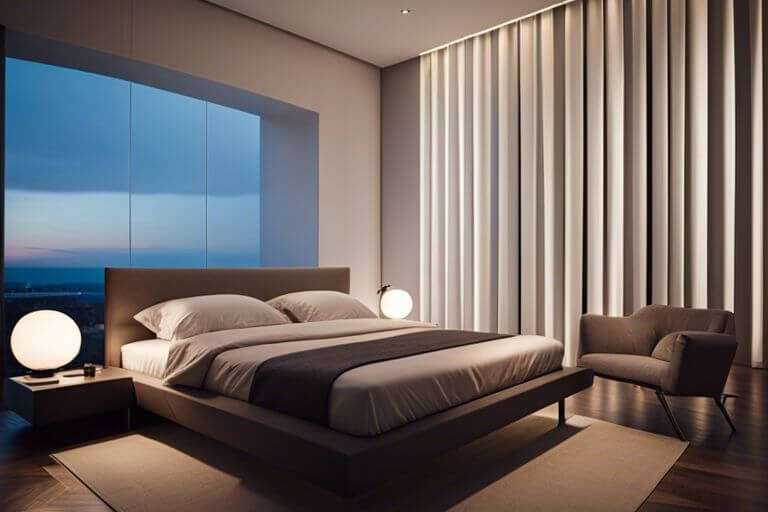The Bedroom as a Sleep-Only Zone – Why It Matters for Insomnia Prevention
It’s crucial to establish the bedroom as a sleep-only zone to combat insomnia effectively. By designating this space solely for sleep, you create a mental association between the bedroom and rest.
This can help improve sleep quality and make falling asleep easier. Avoiding activities like working, watching TV, or scrolling through your phone in bed is crucial for creating the optimal sleep environment needed to prevent insomnia. Learn why this simple step can be a game-changer for your sleep health.
The Concept of Sleep Hygiene
Any effective insomnia prevention plan starts with good sleep hygiene practices. These principles aim to promote healthy sleep patterns and improve the quality of your rest. Simple yet crucial guidelines include maintaining a consistent sleep schedule, creating a calming bedtime routine, and optimizing your sleep environment.
The Role of the Environment
Any sleep environment plays a fundamental role in influencing the quality of your sleep. Factors such as noise levels, lighting, temperature, and comfort all contribute to creating an optimal setting for rest. Ensuring a quiet and dark environment free of distractions can significantly improve your ability to fall and stay asleep.
It’s important to eliminate sources of blue light before bedtime, such as electronic devices, as they can interfere with the production of melatonin, a hormone crucial for regulating our sleep-wake cycle.
The Bedroom’s Role in Sleep
You might not realize it, but your bedroom plays a crucial role in your ability to fall and stay asleep. Psychologically, our brains start to associate different rooms with specific activities.
When we use our bedrooms for activities other than sleep, such as watching TV or working, our brains can get confused, making it harder to relax and fall asleep when we need to.
Creating a Sleep-Only Zone
Any distractions in the bedroom can disrupt your sleep cycle. Establishing a sleep-only zone helps in signaling to your brain that when you enter the bedroom, it’s time to relax and sleep.
Remove electronic devices, work-related materials, and other distractions from your sleeping space. Enhance the calming atmosphere by keeping the room clutter-free and using soothing colors and bedding.
To ensure the effectiveness of your sleep-only zone, it’s important to set boundaries and stick to them. Avoid using electronics in bed, as the blue light emitted can hinder melatonin production.
Invest in a comfortable mattress and pillows to create a cozy environment that promotes restful sleep. By training your brain to associate the bedroom with sleep, you can improve your ability to fall asleep and stay asleep throughout the night.
Strategies for Reinforcing the Bedroom as a Sleep-Only Zone
Limiting Non-Sleep Activities
To prevent distractions that can interfere with your sleep, it is crucial to limit non-sleep activities in the bedroom. Avoid watching TV, working on your laptop, or engaging in stimulating conversations in bed.
By reserving the bedroom exclusively for sleep, you train your brain to associate the space with rest and relaxation. This will help promote better sleep quality and reduce the likelihood of insomnia.
Enhancing the Sleep Environment
Reinforcing a calming sleep environment is necessary for improving your sleep quality. Maintain a cool, dark, and quiet bedroom to support optimal rest. Invest in a comfortable mattress and pillows to promote a restful night’s sleep.
Consider using blackout curtains to block out any light that may disrupt your sleep. Additionally, creating a relaxing bedtime routine can signal to your body that it is time to wind down and prepare for sleep.
Addressing Common Obstacles
Balancing Lifestyle and Bedroom Function
All too often, the bedroom becomes a multi-functional space, serving as an office, entertainment center, or even a gym. However, to tackle insomnia effectively, it’s crucial to ensure that the bedroom is primarily viewed as a sanctuary for sleep.
To strike a balance, consider separating these activities by designating specific areas in your home for work, exercise, and recreation. Keeping the bedroom dedicated solely to sleep can help train your mind and body to associate it with rest and relaxation.
Technology and Its Disruptions
The pervasive use of technology in the bedroom poses a significant challenge to healthy sleep patterns. Artificial light from screens can suppress the production of melatonin, the hormone that regulates sleep. Additionally, emotional stimulation from social media or news can lead to anxiety and disrupt sleep.
To create a conducive sleep environment, consider implementing a technology curfew at least an hour before bedtime, keeping devices out of reach, and using features such as night mode to reduce blue light exposure.
Summing up
Conclusively, designating the bedroom as a sleep-only zone is crucial for preventing insomnia. By creating a calming and relaxing environment free of distractions, individuals can improve their sleep quality and quantity.
Eliminating activities like watching TV or working in bed helps train the brain to associate the bedroom with sleep, promoting a restful and uninterrupted night’s rest. Establishing this sleep hygiene practice is a simple yet effective way to combat insomnia and promote healthy sleep habits for overall well-being.

